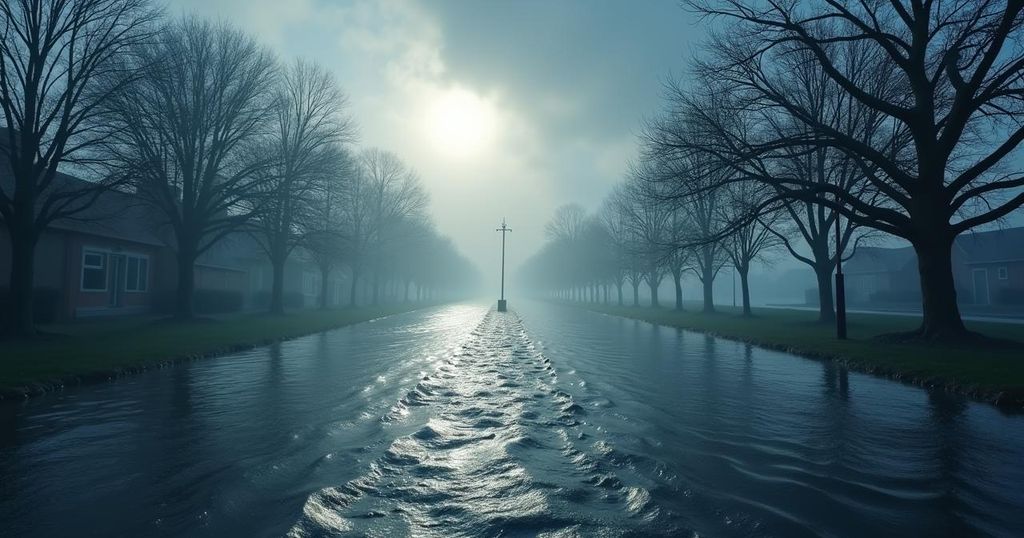Weather Tracker: Flooding in Mexico and India as Europe Faces Cold Spell
Hurricane John intensified and caused severe flooding in Mexico after hitting the coast, while Pune, India experienced its third wettest September day leading to significant flooding. Europe is forecasted to experience a cold wave, with temperatures expected to drop significantly below average across several regions.
On Monday, Hurricane John made landfall on the southern Pacific coast of Mexico, transitioning rapidly from a tropical storm to a category 3 hurricane within a span of less than 24 hours. Upon its arrival, Hurricane John brought sustained winds reaching 120 mph, which resulted in significant storm surges. However, the hurricane soon weakened back to a tropical storm, with wind speeds decreasing to 50 mph by Tuesday morning. The slow movement of John resulted in over 400 mm of rainfall over a few days, leading to extensive flooding and tragic mudslides, claiming the lives of two individuals. Subsequently, Hurricane John shifted slightly eastward into the ocean, where it is predicted to regain strength and once more reach hurricane status as it meanders north-east along the Mexican coast. The storm is expected to continue delivering heavy rainfall, with predictions indicating that some regions in southwestern Mexico could receive upwards of 700 mm of rain within the week, particularly as the system dissipates towards Saturday. In India, the city of Pune located in the western Maharashtra state experienced severe flooding during the same week. The city recorded its third wettest day in September since 1901, with an astonishing 130 mm of rainfall occurring in just 24 hours. Such extreme precipitation is typical during the monsoon months of June through August; however, such late September totals are rare. The current season has demonstrated a trend of delayed withdrawal, resulting in increased likelihood of late September downpours. The substantial rainfall this week was attributed to an upsurge of moisture over the Bay of Bengal and Arabian Sea coinciding with a low-pressure system in the area, and further heavy rain is anticipated in the coming days. Meanwhile, Europe braces for yet another bout of cold weather set to impact northern and western regions, arriving less than two weeks after a previous cold snap. As a low-pressure system shifts eastward, a northerly airflow is poised to transport Arctic air southward, possibly reaching as far as Portugal by Friday. Consequently, temperatures throughout much of northern, western, and parts of central Europe are expected to fall between 5 to 10 degrees Celsius below average for this time of year throughout the weekend. Though temperatures may briefly return to averages next week, forecasts indicate a return to below-normal conditions by midweek.
The article addresses significant weather events occurring simultaneously across different regions. Hurricane John, which recently impacted Mexico, exemplifies the destructive potential of hurricanes, particularly in terms of flooding and fatalities associated with heavy rainfall. The situation is compounded by ongoing risks of further rainfall as the storm remains active along the coast. Additionally, the article highlights unusual precipitation patterns seen in India, indicating climate variability and the possibility of extended monsoon seasons, which pose challenges for local infrastructure and safety. Lastly, the forecasted cold spell in Europe underscores seasonal changes and their implications for weather patterns, reflecting the broader impacts of climate on regional weather systems.
In summary, the article outlines critical weather phenomena affecting various locations globally: Hurricane John has resulted in substantial rainfall and flooding in Mexico, tragically leading to loss of life; Pune, India has experienced record-breaking rainfall marking an aberration in typical monsoon patterns; and Europe is set to encounter a cold snap, indicating a notable climatic shift. Each of these weather events illustrates the dynamic and sometimes severe nature of our global climate system, warranting continued observation and responsive action.
Original Source: www.theguardian.com




Post Comment